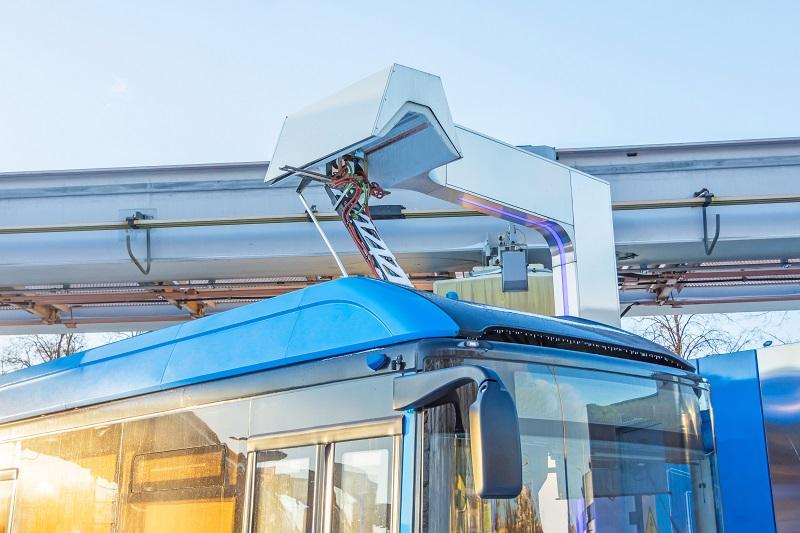Zero-Emission Vehicle Infrastructure Strategies
Transportation systems generate approximately 37 per cent of CO2 emissions globally due to the use of fossil fuel. In response, governments worldwide have pledged and are racing to reduce the resulting global carbon footprint. Creating low or zero-emission transportation systems by switching to cleaner alternative sources is a big leap forward in the fight against climate change. While many countries are advancing electrification and the use of hydrogen fuel and biofuel to power mass transit, there is much more work to be done.
In this Insight Article, members of our Transportation, Industrial and Engineering teams take the driver’s seat to provide perspective on the role of architectural and engineering design for electrification. Specifically, our focus is municipal bus transit systems, and commercial fleet infrastructure for last mile delivery and logistics facilities. The team presents five key considerations including legislation and innovation, electric power readiness, building design and environmental impacts.
Legislation and Innovation
Reducing greenhouse gas emissions (GHG) will take strong action by primary stakeholders in the transportation sector. It’s a partnership across the ecosystem that requires:
● Government political will to develop green-promoting regulations and financial incentives while enforcing the laws/by-laws that set the minimum requirements to adapt the principles of carbon reduction
● Public and private businesses committing to a triple-bottom-line accounting framework comprised of environmental, social and economic (ESG) performance metrics
● Industry innovators leveraging their technical expertise and global business experience to develop cutting-edge technologies that will satisfy market needs, such as batteries with augmented travel range that support larger vehicles and are able to be charged faster.
● Architects, Engineers and Developers who design infrastructure, and density, to support zero-emission transportation systems
● Specialized workforce to deliver, operate and maintain zero-emission electric bus and fleet infrastructures
Electric Power Readiness
The size and scope of strategic electrification projects for transit systems is large, expensive – and complex. Developing a strategy starts with a robust planning process:
● Conduct a feasibility study of the existing transit system including infrastructure and routes
● Review the possibility of constructing a new facility compared to retrofitting existing facilities
● Investigate a building expansion to realize a hybrid solution to meet the project requirements
● Ensure that the charging infrastructure design is aligned to vehicle selection and resulting operational and maintenance requirements
● Consider the timeline for phasing out of diesel for fully electric options
● Decide whether the vehicles will be maintained on site by in-house maintenance staff or off-site by the manufacturer
Electrification, especially for municipal projects, must be designed with maximum flexibility to convert to electric power over time as laws, infrastructure, technology and needs change. For example:
● Build larger and more parking spaces that can accommodate future charging stations. This requires knowing in advance if the fleet will charge using pantographs, that enable the quick and efficient charge of high passenger capacity electric buses versus plug-in-chargers)
● Allow space for electrical equipment including generators, transformers and switchgears rooms and control panels to accommodate an anticipated increase in power consumption. Electrical spaces should be close to charging stations to reduce power loss and costs
● Assess location and number of charging stations along the route
Remember, electrification can take many forms including on board batteries, overhead power, or a hybrid of both options.
Electric Power Considerations
It’s not just about engineering or retrofitting a facility with charging stations. It’s about designing a robust infrastructure that brings reliable power to the charging stations.
The availability and quality of power from a municipality is a primary consideration. With reliable power, (almost) anything is possible. A lack of power, on the other hand, will almost guarantee project delay, total project failure or additional costs. At this stage, the design/client team will need to incorporate strategies, such as adding transformer substations, if needed into the scope of the project. The team must also consider redundancies and emergency situations such as total municipal power failure.
A modernized electricity grid is foundational for reliable energy delivery and powering large vehicles simultaneously before, during or after a journey. An aged and less reliable electric system will only disrupt operations. Electrical infrastructure includes transmission and distribution-level equipment such as:
● Power transformers, voltage regulators and circuit breakers
● Switchgear, capacitors, fuses, controls, arresters, and conductors
● Electric vehicle charging infrastructure and grid control technologies
● Supervisory control and data acquisition (SCADA) systems, advanced distribution management systems (ADMS), distributed energy resource management systems (DERMS), virtual power plant (VPP), cybersecurity systems and more.
Understanding the available geographic resources is critical to defining realistic outcomes. For example, certain regions have the advantage of excellent-quality hydropower. Others benefit from lower prices but rely on less clean energies for power generation such as oil or coal. The higher reliability on clean energy, the greater the reduction of a carbon footprint.
Building Design
There are multiple considerations between designing an electric fleet facility versus a diesel fleet facility.
● Charging location, inside vs outside, is key to designing the electrical infrastructure
● Type of charging system will affect the garage layout
● Mechanical HVAC systems must meet specific requirements
● Maintenance garage must be aligned to the bus or fleet maintenance requirements which are different from internal combustion fleets. This will determine the size of the maintenance bays, storage areas and personnel space.
● Solar panels can be added to the large rooftop or parking areas to further contribute to GHG reductions
ESG Impacts
Environmental, Social and Governance (ESG) impacts are becoming imperative, especially for the publicly funded sector. Transportation overlaps with many of the United Nations Sustainable Development Goals designed to improve quality of life for people and the planet. Greenhouse gases are warming our planet, and human activity is directly connected to what is being released into our atmosphere. Understanding of the importance of building social capital is increasing, with many projects now focusing on shared values for a common purpose – including the electrification of buses and commercial fleets. We need to think about products and components with a cradle-to-grave perspective which make electrification viable today – and in the future.
NORR’s project experience extends beyond the implementation of electrified fleets and into the full lifecycle of the systems that they require and the technologies that are employed. We understand the environmental impacts from the systems we design and are aware that a product’s lifecycle can have a major impact. We are working with clean tech facilities where recovery of the materials in lithium-ion batteries is conducted in a safe, environmentally responsible and economically sustainable manner to assist in mitigating those impacts.
With a deep history in transportation design, our multi-disciplinary team of architects and engineers lead and consult on low- and zero-emission transportation systems customized to specific requirements. Start a conversation with our team.

